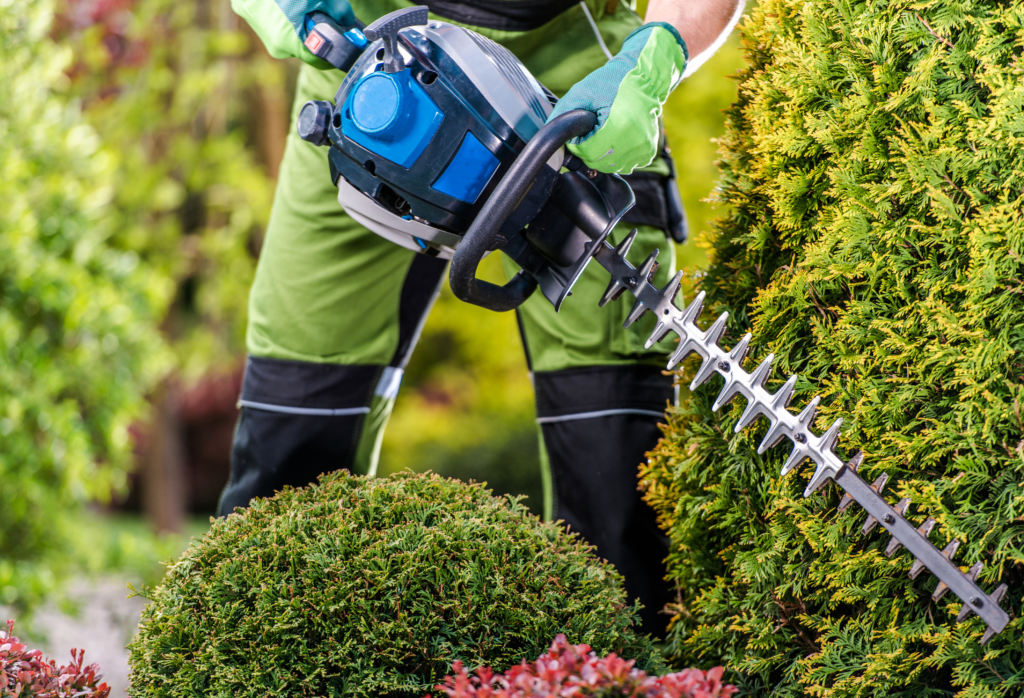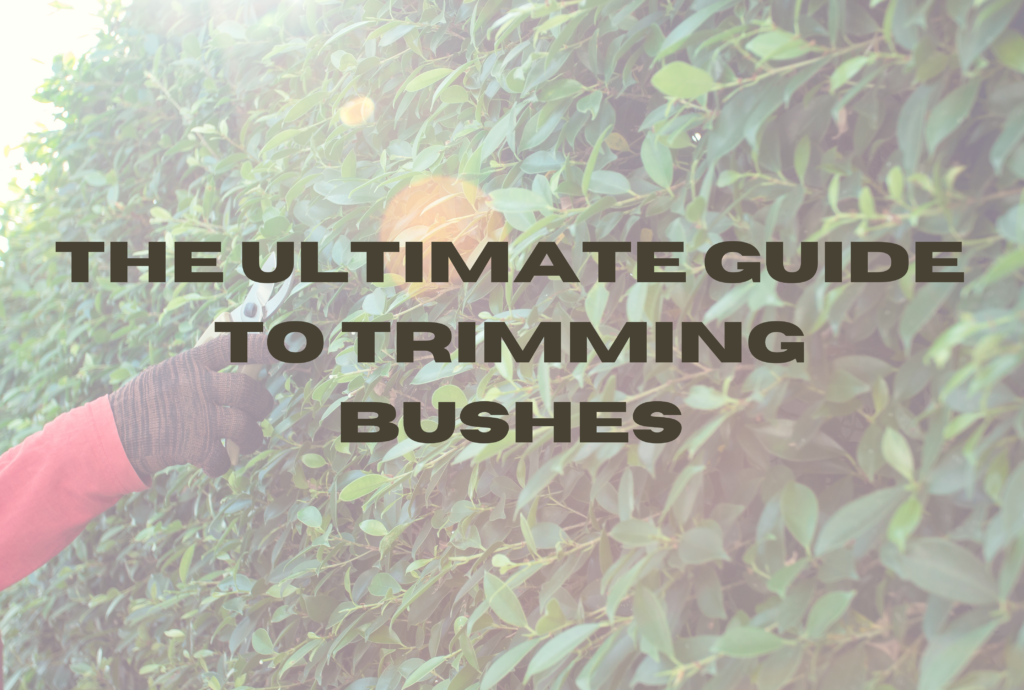Table of Contents
Maintaining a neat and well-groomed garden requires regular attention to detail, especially when it comes to trimming bushes. Properly trimmed bushes not only enhance the aesthetic appeal of your outdoor space but also promote healthy growth and vitality. In this comprehensive guide, we’ll take you through a step-by-step tutorial on how to trim bushes like a pro, covering everything from necessary tools to expert techniques.
1) Understanding Bush Trimming
Before embarking on the art of bush trimming, it’s important to grasp the profound purpose and myriad benefits that this practice offers. Trimming isn’t just about aesthetics; it’s a vital technique that fosters control over growth, eliminates dead or diseased branches, and sculpts bushes into elegant forms. Beyond the visual appeal, trimming also serves as a catalyst for new growth, invigorating plants and bolstering their overall health. Our most recent blog provides tips on when and how to prune lilac bushes. Here you will understand fundamental aspects for a successful and fulfilling journey into the world of bush trimming.
2) Essential Tools for Bush Trimming
Be sure you gather the essential tools for bush trimming:
- Pruning Shears: Ideal for cutting small branches and twigs
- Loppers: Used for thicker branches that pruning shears can’t handle
- Hedge Trimmers: Perfect for shaping and trimming larger bushes
- Gloves: Protect your hands from thorns and sharp edges
- Safety Goggles: Shield your eyes from debris and branches

3) Timing and Frequency
The timing of bush trimming depends on the type of bushes you have. For deciduous bushes, late winter or early spring is the optimal time for trimming because it occurs before the new growth phase. This timing allows you to remove any dead or damaged branches from winter while encouraging healthy growth in the upcoming season. However, if you notice any urgent issues such as disease or overgrowth, don’t hesitate to trim outside of this timeframe to address these concerns promptly, trim deciduous bushes in late winter or early spring before new growth starts.
4) Step by Step Trimming Process
- Assess the Bush: Begin by inspecting the bush for dead or diseased branches. Remove any damaged or crossing branches to improve airflow and prevent disease spread.
- Plan your Cuts: Determine the desired shape and size of the bush before making cuts. Use pruning shears for small branches and loppers for thicker ones.
- Start Trimming: Make clean cuts at a 45-degree angle just above a healthy bud or lateral branch. Avoid cutting too close to the main stem.
- Shape the Bush: Use hedge trimmers to shape the bush evenly. Start from the bottom and work your way up, following the natural contours of the bush.
5) Tips for Optimal Results
- Sharpen your tools regularly for clean cuts and ease of use: Regularly sharpening your pruning shears, loppers, and hedge trimmers ensures that they are in optimal condition for effective trimming and reduces the effort required to make cuts.
- Use long-handled tools for reaching higher branches safely: This allows you to reach higher branches safely without straining or overextending but also provides better control over the cutting process.
- Clean and sanitize tools after each use to prevent disease spread: Wipe down the blades with a disinfectant solution or rubbing alcohol and allow them to dry thoroughly before storing them.
- Avoid trimming bushes during flowering periods to preserve blooms.
- Dispose of trimmings properly to avoid clutter and pests: Bagging or composting trimmings is a sustainable way to manage garden waste and prevent it from becoming a breeding ground for pests or disease-causing organisms. Regular yard maintenance, including proper disposal of trimmings, contributes to a tidy and healthy outdoor environment.
6) What Things to Avoid?
Over pruning can stress bushes and hinder growth by removing excessive foliage. Neglecting regular maintenance leads to overgrowth and an unruly appearance in bushes. Using dull tools can cause damage to branches and make trimming more difficult and less effective. It’s crucial to prioritize safety by wearing protective gear and exercising caution when using sharp tools to prevent accidents and injuries.
Trimming bushes may seem daunting at first, but with right tools, techniques, and knowledge you can achieve professional-looking results that enhance the beauty of your garden or landscape. Regularly assessing your bushes, planning your cuts thoughtfully, and prioritizing safety throughout the trimming process are key components of successful bush maintenance. Remember to consider the timing and frequency of trimming based on the type of bushes you have to ensure optimal growth and health. By following this guide by His Workmanship and implementing best practices, you’ll be well-equipped to maintain beautiful and healthy bushes in your garden year-round, contributing to a vibrant and inviting outdoor space!



